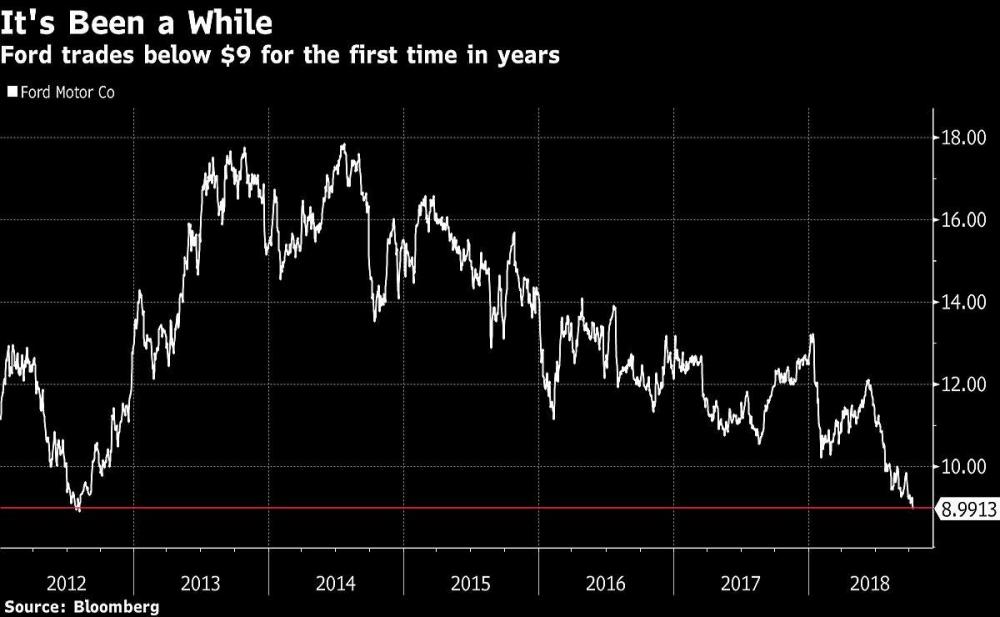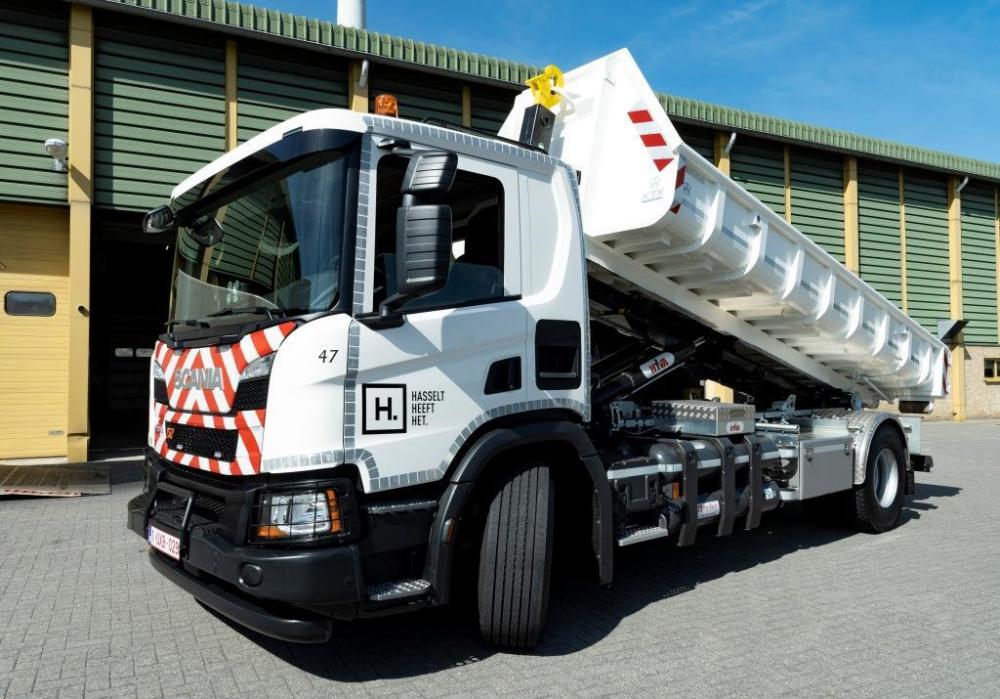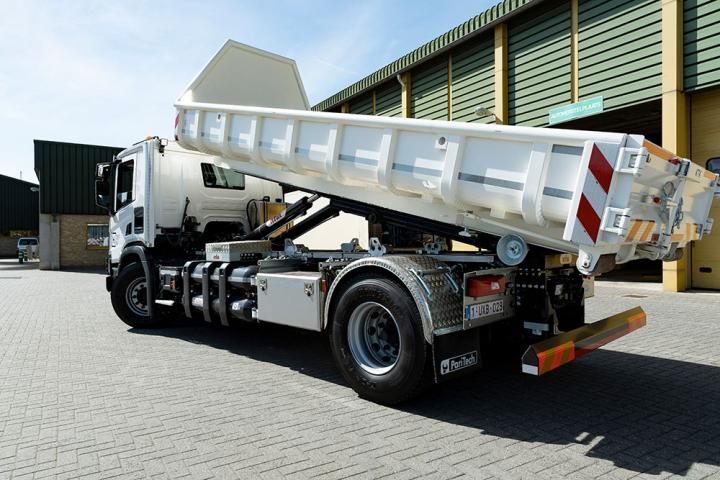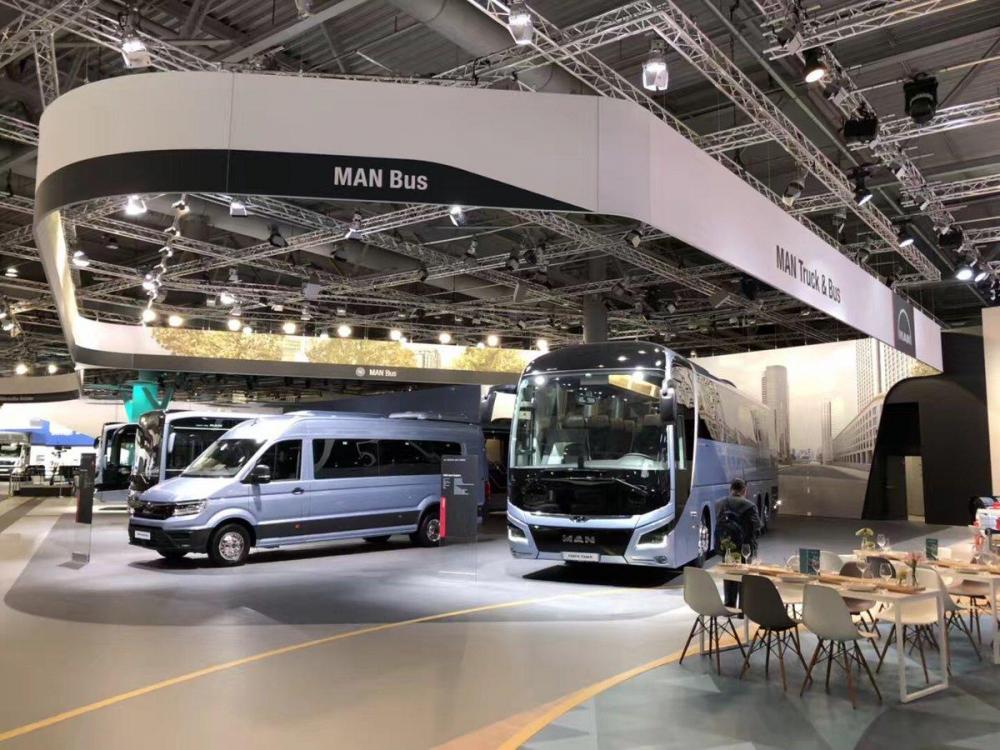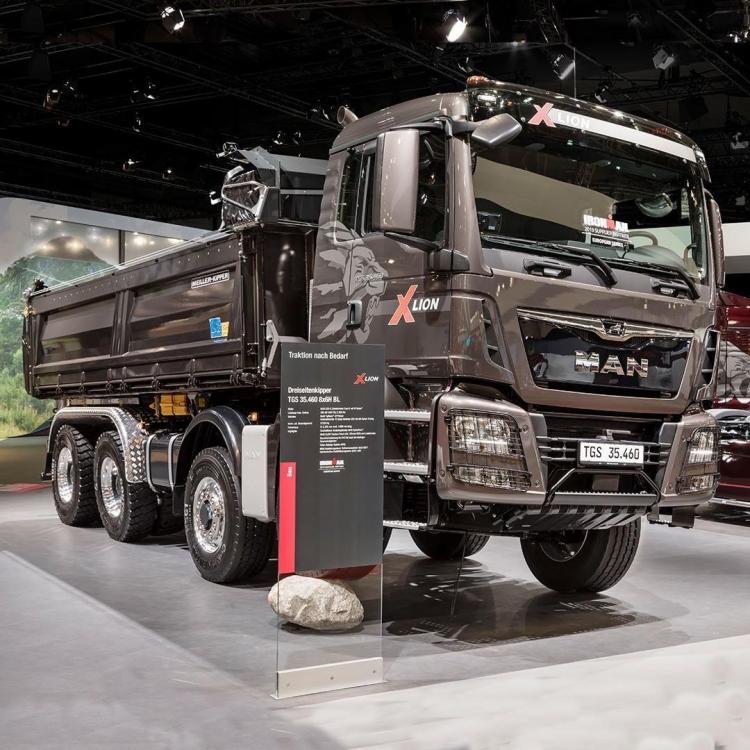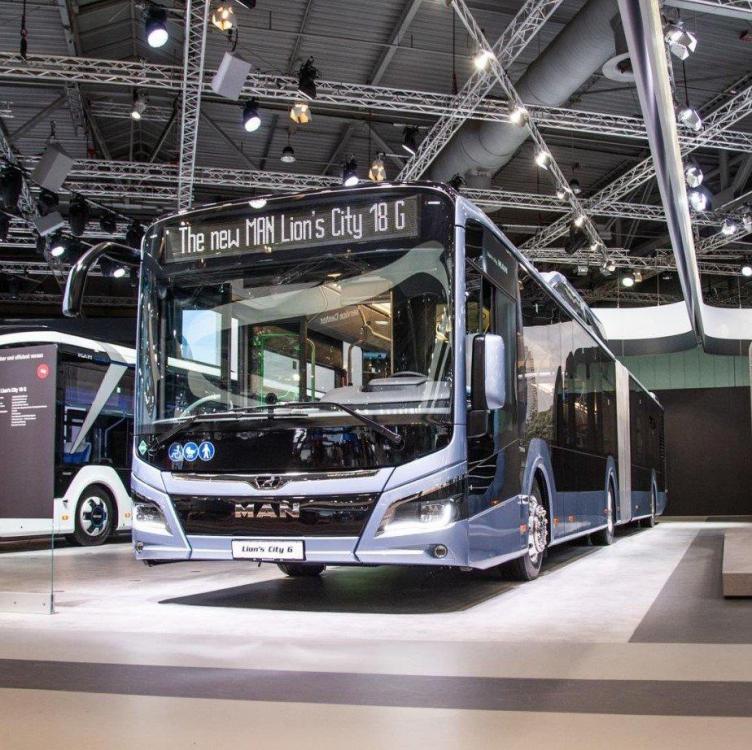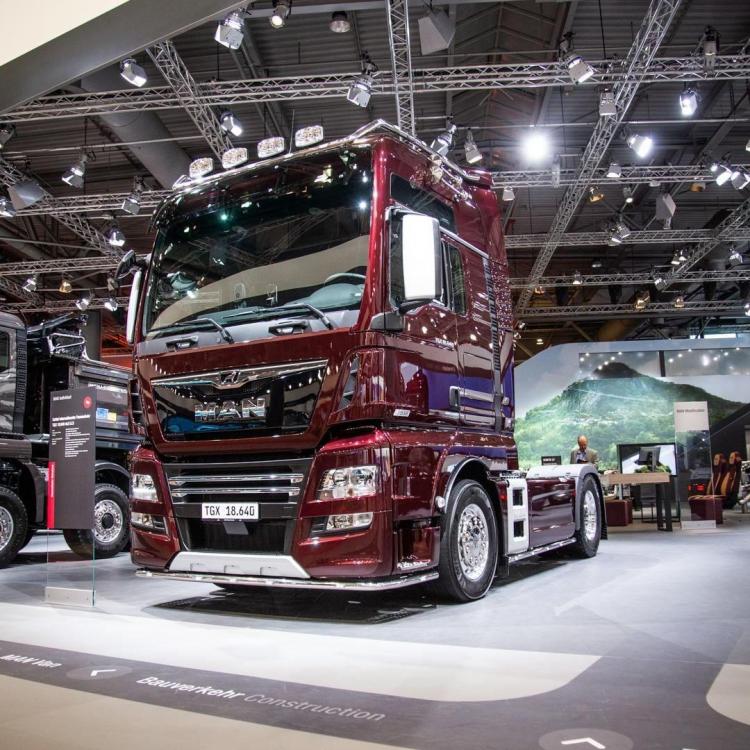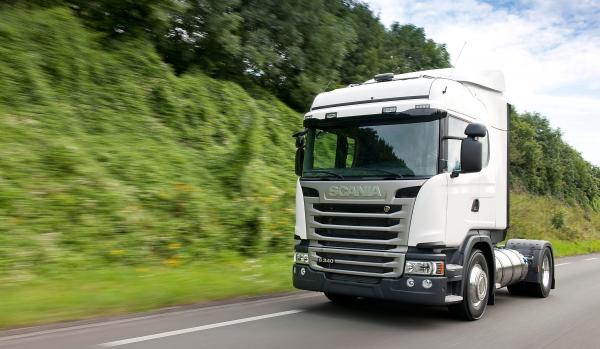
kscarbel2
Moderator-
Posts
18,868 -
Joined
-
Days Won
114
Content Type
Profiles
Forums
Gallery
Events
Blogs
BMT Wiki
Collections
Store
Everything posted by kscarbel2
-
Ford shares drop below $9 for the first time since 2012 Keith Naughton, Bloomberg / October 9, 2018 DETROIT -- Ford Motor Co. shares are taking a pounding as the automaker adopts a piecemeal approach to outlining cost cuts that are part of a years-long and costly restructuring. Ford shares fell 3.35 percent, or 31 cents, to close at $8.95 on Tuesday and dropped below $9 for the first time since August 2012. Ford said Monday that it’ll shake up its global marketing operations, in part by transferring advertising business away from longtime partner WPP Plc, but the automaker is expecting to save just $150 million annually. That pales in comparison to the $11 billion in charges that Ford has warned its restructuring could lead to over the next three to five years. While the automaker told its 70,000 salaried employees last week that they face unspecified job cuts, Ford didn’t quantify how big it anticipates the reduction will be. The company also didn’t address whether it planned involuntary separations or estimate the financial impact. Moody’s Investor Service cut Ford’s credit rating in August to one notch above junk on concerns about executing its overhaul. Ford is facing headwinds including cratering demand for sedans in North America -- a segment that it’s exiting -- costlier emissions rules in Europe and a stale product line in Asia. CEO Jim Hackett also told Bloomberg News last month that President Donald Trump’s tariffs on imported metals will cost Ford about $1 billion in profit. .
-
I've sold a lot of trucks with 90mm kingpin fifth wheels (versus 50mm).
-
Were it me, I would install what the factory options were, a Fuller AT1202 (2.036/1.00), air shift AT1202A (2.036/1.00), or Spicer 1241C (2.37/0.812), 1241CT (2.37/0.812 with Power Tower), or 1241DT (1.59/0.812 with Power Tower).
-
Scania Group Press Release / October 8, 2018 The first gas-powered truck in Scania’s new XT range for construction applications has been delivered to the Belgian city of Hasselt. The Scania P 340 4×2 hooklift truck for Compressed Natural Gas (CNG) was selected by the municipal council due to its lower emissions. “CNG ensures lower carbon emissions, but what is even more important in urban environments is that this truck emits 95 percent fewer particles, unlike its diesel counterparts,” says Joost Venken, Councillor for Environment and Sustainability. “In addition to the health benefits, CNG is also considerably cheaper to operate.” CNG truck meets Hasselt’s clean fleet objectives Hasselt is keen to invest in a cleaner vehicle fleet, and the Scania truck fits right in. “At the moment, CNG is the most sustainable choice we can make. Electric trucks that meet requirements are not yet available in Belgium,” adds Michel Froidmont, Hasselt’s Councillor for Infrastructure and Public Works. Venken is keen to emphasise that both Hasselt and the surrounding Limburg Province is at the forefront by operating a non-diesel vehicle with the same manoeuvrability performance. “There is no compromise on power, and compared with electric vehicles, CNG refuelling is considerably faster. Scania’s gas engines can also run equally well on biogas in the future, so we can continue to significantly reduce CO2 emissions.” .
-
Inside VW-Ford commercial truck partnership Automotive News / October 8. 2018 Thomas Sedran, a former corporate consultant with AlixPartners, was the brains behind Volkswagen Group's Together – Strategy 2025 midterm road map. VW's former CEO, Matthias Müller, appointed Sedran head of group strategy in November 2015 to plot a course toward an electrified future after the automaker's diesel-cheating scandal. Sedran switched jobs last month, returning to an executive role, where he will run Volkswagen Commercial Vehicles. This will put him in an ideal position to realize the goals he mapped out when he began talks with Ford Motor Co. over a strategic alliance rooted in the two companies' commercial vehicle businesses. He is no stranger to the executive suite, having been interim CEO of Opel and later head of Chevrolet Europe. Sedran, who turns 54 this week, spoke with Automotive News Europe Correspondent Christiaan Hetzner. Q:Why did Volkswagen partner with Ford? A:Other companies are already in alliances, but now the two market leaders in Europe are joining forces. We won't have a dominant market position, however, as we each have only 15 percent. How were the initial talks? We realized fairly fast it worked from a cultural perspective, and there was the right chemistry between the main players. Did you consider other candidates? Ford was a logical partner. The product life cycles are a good match. We will build for them, and they will build for us. Could this extend from light commercial vehicles into passenger cars, or does VW already have the scale it needs? On the passenger-car side, neither company really has the volume pressure. But there are, naturally, fields where splitting the development costs could be an advantage. I wouldn't rule out anything, but the focus is getting the LCV projects running. We want a concrete project vehicle that has a certain volume, and then you can talk about other strategic issues. VW Group is nearly twice the size of Ford. What is the risk that the two teams will struggle to get along with such a size discrepancy? When we finalize this alliance, you can be assured it will be balanced. There is no junior nor senior partner, but, rather, two companies at eye level that will closely cooperate with one another. There might be specific years where there will be a difference in production volumes, but in the sum total, it is very balanced. .
-
The picture isn’t clear. Does it have a coolant hose running to/from it?
-
GM deploys new defense unit, hires U.S. Army veteran Michael Wayland, Automotive News / October 5, 2018 General Motors' new military defense unit is up and running and has hired a U.S. Army veteran as its president. GM Defense LLC, a Washington, D.C.-based subsidiary of the automaker, recently appointed retired Maj. Gen. John Charlton to the position. An exact appointment date was not immediately available. He will report to GM Defense CEO Charlie Freese, a 15-year GM veteran and fuel cell technology specialist. Freese reports to GM product chief Mark Reuss. The news comes roughly a year after Automotive News first reported GM's plans to resurrect GM Defense after selling its previous defense unit to General Dynamics Corp. for $1.1 billion in 2003. Prior to joining GM Defense, Charlton spent a 34 years in the U.S. Army, with three combat tours in Iraq and one in Afghanistan. He held command positions at every level and various senior staff positions on the U.S. Joint Chiefs of Staff. Charlton, who most recently was a commanding general for the U.S. Army Test and Evaluation Command, said he is "proud" to continue his career in the defense industry with GM, which has the "flexibility and agility to provide scalable options that can meet the ever-changing requirements of our country's warfighters." GM Defense initially is expected to focus on military and aerospace applications for GM's emerging fuel cell technologies, including a fuel cell-powered Chevrolet Colorado known as the ZH2 and the Silent Utility Rover Universal Superstructure platform. In June, GM announced an exclusive deal with Liebherr-Aerospace of France to develop a hydrogen fuel cell-powered auxiliary power unit for aircraft applications. An auxiliary power unit typically powers an aircraft's lighting, air conditioning, backup systems and other auxiliary functions. GM Defense also is advertising itself as a specialist in vehicle development, system cybersecurity, and electric and autonomous vehicle technologies.
-
Ford poised to begin cuts to salaried work force Michael Martinez, Automotive News / October 5, 2018 DETROIT -- Ford Motor Co. is preparing to cut an undetermined number of its 70,000 salaried workers globally as it implements CEO Jim Hackett's US$11 billion companywide restructuring. The automaker on Thursday began informing employees internally that it was reorganizing its salaried work force, but said more details, including which jobs will be axed and where, will be disclosed over the coming months. "It's really about redesigning the business," Ford spokeswoman Karen Hampton said. "An outcome of that is that there's likely to be reductions. The real purpose is to change the way we work." Hampton said Ford's salaried work force reductions will be complete by the second quarter of 2019. We are in the early stages of reorganizing our global salaried workforce to support the company’s strategic objectives, create a more dynamic and empowering work environment, and become more fit as a business," Ford Canada spokesman Matthew Drennan-Scace said in an email to Automotive News Canada. "We will announce more specifics at the appropriate time." Hackett this year announced the need for a global restructuring to help it turn around underperforming regions and improve profits in North America. Separately, Ford this year upped its five-year cost-cutting goal to US$25.5 billion, US$11.5 billion more than it originally forecast. Ford at the time said nearly half of the cuts would be in sales and marketing -- through incentive optimization, reduced advertising and other actions -- with the rest coming from engineering and product development, material costs, manufacturing and information technology, in that order. Outside Ford, and among some within it, there is mounting impatience with Ford shares trading just above US$9 and the vagueness of the vision that Hackett has articulated thus far. Ford shares fell 0.33 percent to close Friday at US$9.12. "We're addressing some long-term issues, and we're going to do those in very thoughtful and orderly ways -- not chaotic ways," Hackett said in an interview with Automotive News last month. "We're not in a crisis. The company's in great shape."
-
Ford to slash jobs as it reorganizes salaried workforce The Wall Street Journal / October 5, 2018 Ford Motor Co. has informed its global salaried workforce of a planned reorganization that will cut jobs, part of Chief Executive Jim Hackett’s broader plan to squeeze costs and improve efficiencies at the struggling auto maker. Ford said Friday that it is in the “early stages of reorganizing our global salaried workforce,” though it declined to disclose how many people it may let go. The No. 2 U.S. auto maker by sales employs about 70,000 salaried workers world-wide, a spokeswoman said. The planned cuts should be decided by the second quarter of 2019. It reflects Hackett’s “desire to have an organization that is moving faster, and part of that comes from having a flatter” management structure, she said. Ford said the reorganization “will result in head count reduction over time and this will vary based on team and location.” The company told employees of the plan Thursday.
-
The ADF is selling off their M113s. That would round off the package.
-
The Washington Post / October 4, 2018 The Trump administration on Thursday wrapped trucks into its updated driverless vehicle policy, saying it will “no longer assume” that a commercial motor vehicle driver has to be a human or that a trucker — or anyone else — necessarily needs to be in the cab. The administration said it would work to ease the federal process for exempting trucks and other vehicles from existing safety standards that might inhibit the use of automation, as long as companies can make the case that their vehicles are likely to achieve “an equivalent level of safety.” Federal officials also announced a joint research effort, by the departments of Transportation, Labor, Commerce and Health and Human Services, to study the “workforce impacts” of driverless vehicles. Transportation Secretary Elaine Chao said she remains “extremely concerned” about the impact increased automation will have on the nation’s workforce. And transportation officials said they would seek ways to eliminate federal, state and local impediments to the deployment of driverless vehicles more broadly, which they said will bring economic and safety benefits. The moves comes as Waymo, a leading self-driving firm, has been working to open a driverless service to the public in Arizona by year’s end. The federal guidelines also come after a self-driving Uber SUV misidentified and killed a pedestrian in Tempe, Ariz. in March. Uber had turned off the Volvo’s automatic emergency braking system as part of its testing program, and the crash remains under investigation by the National Transportation Safety Board. The updated federal “guidance” now covers buses, transit and trucks in addition to cars, and it remains voluntary, putting the onus for safety on the companies developing the technologies rather than government regulation. The guidance, dubbed Automated Vehicles 3.0, continues to call for companies to voluntarily describe why their vehicles are safe enough to be on public roads, though so far only four of the scores of companies active in the field have made those assessments public. The Department of Transportation’s updated approach does make a nod to recent high-profile crashes and what officials acknowledged is skepticism about autonomous vehicles among a broad swath of the population. The safety driver who was supposed to be closely monitoring the behavior of the self-driving Uber in Tempe was streaming NBC’s “The Voice” in the run-up to the deadly crash, according to Tempe police investigators. A top federal transportation official said the government hopes companies will give “consideration” to providing information on how they train and monitor their safety drivers. The administration plans to launch new pilot programs to work with states and industry, and federal officials said one such effort by the National Highway Traffic Safety Administration could eventually lay the groundwork for possible new regulations. Legislation on self-driving cars has been stalled in the Senate, and states have taken different tacks. Arizona has taken a more laissez-faire approach, and California has required tighter oversight of driverless testing and operations in the state. A key holdup has been skepticism among some senators and others about whether states would be excluded from their traditional roles overseeing drivers, now that drivers don’t have to be human. “There’s wariness about the federal government’s regulatory commitment [and] willingness to police the companies,” said Bryant Walker Smith, an assistant professor of law at the University of South Carolina and a driverless policy expert. “Even more than the distrust in the technology, it’s distrust in the companies . . . And it’s even a distrust in the administrative ability of government to regulate, to act as a check." The updated automated vehicle policy says the Department of Transportation “will modernize or eliminate outdated regulations that unnecessarily impede the development of automated vehicles” and argues that “conflicting State and local laws and regulations surrounding automated vehicles create confusion, introduce barriers, and present compliance challenges." The 80-page policy document does not catalogue all the specific regulations officials seek to eliminate or the local regulations said to create problems. But Smith said he was struck by the Transportation Department’s effort to “give a green light to truck automation.” The issue was such a “political hot potato” that it was largely avoided in the Senate bill, he said. And it could become a flash point in relations with states. “Truck automation could be an area where there is some active preemption of state and local laws, especially if there are some states that are more resistant to truck automation. I can see something of a showdown,” Smith said. Driverless industry advocates say there are numerous common-sense changes that could be made in the field overall, such as getting rid of a requirement that vehicles have a steering wheel, even when being driven by computers using cameras and lasers. Such changes would allow ambitious redesigns of vehicles, and could spur a radical rethinking of what cars look like and what people do in them. Automakers and tech firms have proposed building rolling motels, restaurants and workspaces, or making vehicles that can move more people more efficiently and safely and help ease clogged roads. But industry advocates say those efforts will be stymied by antiquated rules. But some safety groups say the federal policy, and the regulatory changes that may result from them, could introduce new dangers. The policy “will not assure the public that unproven, unreliable and unsafe” autonomous vehicles are kept off the roads, according to Advocates for Highway and Auto Safety, which represents consumer and safety groups and insurance companies. Without “real oversight” from the U.S. Department of Transportation and “minimum performance standards” for autonomous vehicles " the public will be left defenseless . . . Unfortunately, today’s unenforceable guidelines do little to prevent more deaths and injuries from happening." Uber said it will soon join Waymo, General Motors, Ford and Nuro, which makes a self-driving vehicle for delivering goods, in offering a voluntary safety assessment. Uber spokeswoman Sarah Abboud said the firm is still reviewing the updated guidance, but “we appreciate the Department’s commitment to aligning government, industry, and other stakeholders toward the safe development of this technology.” The assessment will be released “in the coming weeks,” she said.
-
Volvo fuel injection system supplier Delphi set a new 52-week low yesterday of $29.53. Today, the CEO resigned after just 10 months on the job. ----------------------------------------------------------------------------------------------- Reuters / October 5, 2018 Auto supplier Delphi Technologies Plc said on Friday Chief Executive Officer Liam Butterworth was stepping down, more than ten months after taking the post. The company, which also cut its full-year revenue forecast, said director Hari Nair would be the interim chief and its board has commenced a comprehensive search to identify a permanent CEO. Delphi said Butterworth was stepping down "to pursue other interests." Butterworth had taken the top job in December after Delphi was spun off from Delphi Automotive, now known as Aptiv Plc. Nair has been a director at Delphi since the spin-off. Nair has previously worked with Tenneco Inc. and General Motors. The company said it expects full-year revenue growth to be about flat, compared with its previous forecast of up 2 percent to 4 percent. Delphi, citing challenging industry dynamics, also cut its full-year adjusted operating margin forecast range to 11.3 percent to 11.5 percent, from 12.1 percent to 12.3 percent. Up to Thursday's close, Delphi's shares had fallen about 41 percent since their listing on the New York Stock Exchange in late November. Delphi ranks No. 58 on the Automotive News list of the top 100 global suppliers with worldwide sales to automakers of $3.9 billion in 2017.
-
Scania Group Press Release / October 3, 2018 Scania provides country’s first-ever six LNG trucks to Transportes Andreu, with help of ENARGAS. Argentina has just reached a milestone on the road to sustainable transport with the introduction of the country’s first-ever liquid natural gas-powered trucks. In mid-September, Scania Argentina presented a fleet of six LNG trucks to Transportes Andreu, a haulier from Mendoza, in a ceremony in Buenos Aires that was attended by officials from ENARGAS, the country’s national gas regulator. Leonardo Andreu, Director of Transportes Andreu, certainly believes that the trucks’ blend of efficiency and clean technology will help his company. “We are always looking to meet our customers’ needs in an innovative way, with the best technology and the least impact on the environment, and that is why we have acquired these LNG trucks. With these vehicles we will be more efficient in providing our services.” A track record of sustainable transport Scania and ENARGAS have been working together for some time to import gas-powered vehicles to Argentina, and the pioneering deal with Transportes Andreu adds to the already impressive progress the truck maker has made towards sustainable transport in Europe. “For the first time, the country is going to have vehicles that runs completely on gas, and more specifically on LNG,” says Julián Rosso, Head of Sales Engineering at Scania Argentina. “It is a proven technology and there are already more than 2,500 Scania trucks operating in Europe, which means that from a technological point of view, the product is an efficient, safe and aligned solution with Argentina’s energy matrix.” Lower emissions, and less noisy too In a neat twist that amounts to a ‘virtual pipeline’, Transportes Andreu will use the LNG-powered trucks to transport liquid natural gas. The six trucks are equipped with nine-litre, five-cylinder engines, and are capable of delivering 340hp with a torque of 1600Nm. And the trucks are not only impressive in their carbon reduction and power capabilities. “In addition to the trucks’ reduction in emissions, it is also important to note that their engines are much quieter. So from the operational point of view the customer will have an extremely powerful and efficient engine that also has a low environmental impact in terms of emissions and noise,” says Rosso. How LNG works LNG is a technology with great potential for efficiency and emission reductions, according to Guillermo Hughes, Senior Advisor for Scania Latin America. “Liquefied natural gas is stored in two cryogenic tanks at a temperature of minus 163°C. With both tanks, you can achieve a range of more than 1,200km – equal to any vehicle with a diesel engine. As well as the efficiency and performance that characterises any Scania engine, these trucks’ exhaust gases are clean and mainly consist of water vapour, and they actually far exceed the Euro 6 emission standard in force in Europe.” New truck generation soon on the way Like the rest of Latin America, Argentina will soon be launching Scania’s new truck generation, as part of the last stage of the global rollout. New technology and alternative fuels such as LNG will continue to become a key part of Scania’s offer in the years ahead. .
-
-
Renault Trucks Press Release / September 24, 2018 Die zweite Generation der Renault Trucks Elektrofahrzeuge sowie das limitierte Sondermodell Renault Trucks T High Renault Sport Racing standen im Mittelpunkt des Auftrittes von Renault Trucks bei der IAA 2018. .
-
MAN Truck & Bus Press Release / September 27, 2018 Be in control of the traffic when turning and manoeuvring with the innovative MAN Video-Turning-System (VAS). Put an end to safety risks by eliminating blind spots and unseen areas: https://go.man/OZQwqeDI .
-
Great presentation.
-
DAF Trucks Press Release / October 3, 2018 Take a closer look at DAF. To be a successful truck manufacturer, we have to be the best on all fronts. Build the best trucks, provide the best services, have the best dealers and of course, the best people. All with only one thing in mind: achieving the best for you. .
-
DAF Trucks Press Release / September 26, 2018 Introducing our DAF collection, featuring official DAF clothing, accessories and merchandise. Stylish and modern clothing for all the family; tough work and construction wear; luxury leather laptop cases, bags and more; plus, DAF branded kids items they’ll love. All beautifully crafted and demonstrating the Pure Excellence you’d expect from DAF: https://dafshop.com .
BigMackTrucks.com
BigMackTrucks.com is a support forum for antique, classic and modern Mack Trucks! The forum is owned and maintained by Watt's Truck Center, Inc. an independent, full service Mack dealer. The forums are not affiliated with Mack Trucks, Inc.
Our Vendors and Advertisers
Thank you for your support!


